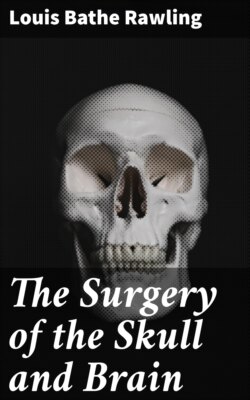Читать книгу The Surgery of the Skull and Brain - Louis Bathe Rawling - Страница 30
На сайте Литреса книга снята с продажи.
Hæmorrhage from the dural vessels.
ОглавлениеIn this case the bleeding may occur from three sources, meningeal veins—often of considerable size when related to neighbouring tumour-formation—the middle meningeal artery, and the venous sinuses of the brain.
Hæmorrhage from meningeal veins may be arrested by one or other of the following methods:—
1. Gentle pressure as applied either by dry gauze, or wet gauze soaked in saline solution at a temperature between 110 and 115 degrees Fahrenheit.
2. The application of a piece of muscle to the bleeding-point. This method was, I believe, first introduced by Sir Victor Horsley. Some muscle is usually available for the purpose, usually the temporal muscle. A small portion of muscle is snipped off, spread out as a flat muscular pad, the bleeding area dried, and the graft quickly applied. It soon adheres, and usually arrests the hæmorrhage.
3. The application of a ligature. This method is placed last, being the most difficult. It is usually necessary to underrun the bleeding-point with a fine needle threaded with the finest of silk. It presents the disadvantage in that the needle may perforate the dura mater and puncture one of the superficial cerebral veins.
Fig. 6. Cushing’s Clips. A, The holder of the clips; B, A clip ready to be applied; C, Two clips applied to the middle meningeal artery.
Hæmorrhage from the middle meningeal artery may be controlled by ligature or torsion, and added to these methods we have one other, recently introduced by Cushing—silver wire ‘clips’. These clips are U-shaped, loaded on a magazine, picked up as required in the jaws of a specially indented forceps, and clipped on to the vessel—usually one on either side of the bleeding-point.
Hæmorrhage from venous sinuses is dealt with on p. 150.
